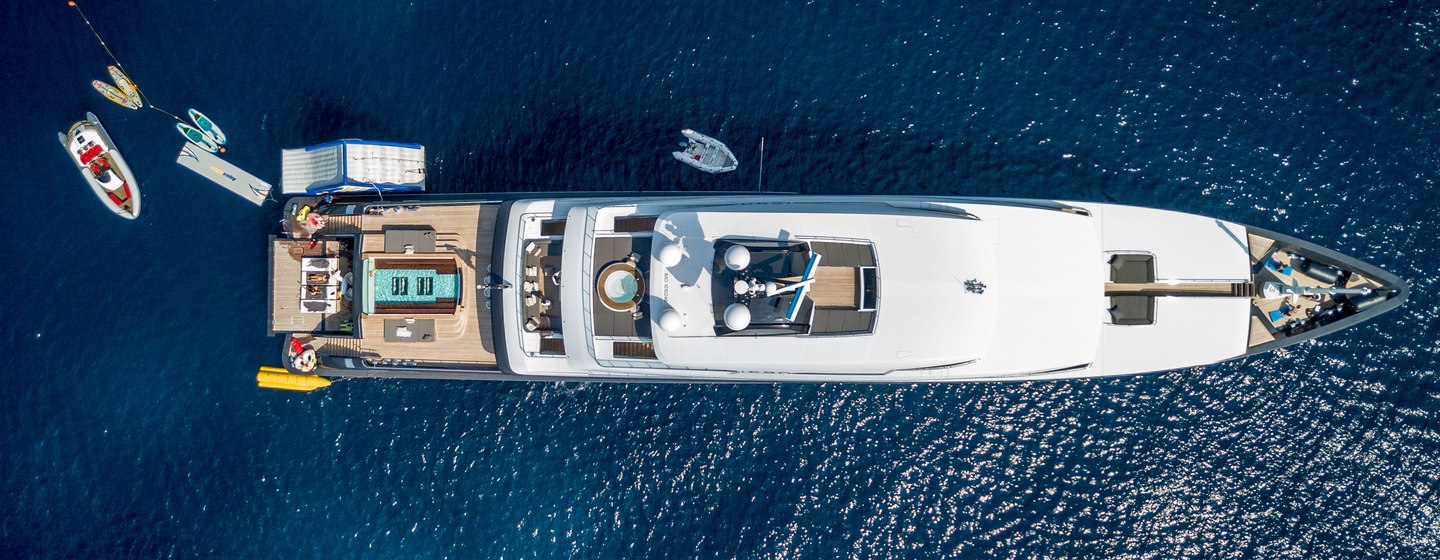When measuring a yacht, many instinctively focus on its length, a straightforward metric. While longer yachts are often seen as bigger, length alone doesn’t fully capture a yacht’s true size. The world's biggest yachts deserve a more accurate measurement.
The true measure of a yacht’s size, and arguably the most meaningful one, is its Gross Tonnage (GT). Gross Tonnage reflects the actual internal volume of a yacht, offering a more accurate representation of its overall size and capacity, making it the best metric to assess the world's largest yachts.
What is Gross Tonnage (GT)?
Gross Tonnage is a measure of the total internal volume of a yacht, including all enclosed spaces such as living areas, engine rooms, storage spaces, and more. Unlike length, which is a linear measurement, GT is a volumetric measure. It encompasses the entire space within the yacht’s hull and superstructure, giving a comprehensive sense of the yacht's size.
For example, two yachts might have the same length, but if one has a higher Gross Tonnage, it means that the yacht has more internal space — potentially offering more amenities, larger living areas, and greater levels of amenities and comfort. This makes GT an important factor in understanding the actual scale of a yacht.
Why Length Isn’t the Full Measure
While length provides a clear measure of how long a yacht is, it doesn’t account for the internal volume. A longer yacht could have a sleek, narrow design that limits interior space, whereas a shorter yacht might be designed with a broader beam (width) and more decks, resulting in a significantly higher Gross Tonnage.
For example, a 50m yacht with a wide beam and multiple decks could have a significantly higher Gross Tonnage (GT) than a 60m yacht with a narrower beam and fewer decks.
Case Studies: NORD vs. YAS
Two examples that highlight the impact of Gross Tonnage (GT) are NORD and YAS.
NORD, a Lürssen yacht launched in 2021, and YAS, a conversion yacht built by ADM Shipyard from a 1981 original build and launched as a superyacht in 2021, are both approximately 141m in length. However, the difference in GT between the two is striking: NORD has a GT of 10,154, more than double that of YAS, which has a GT of 5,002.
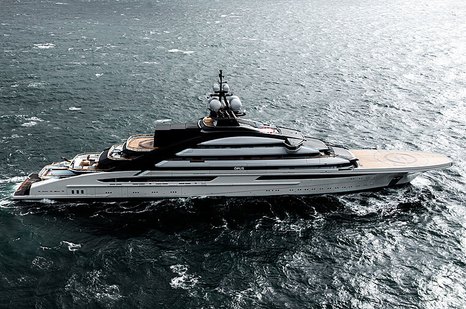
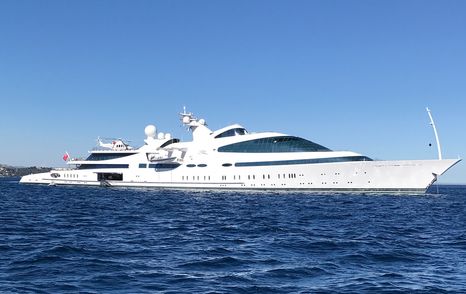
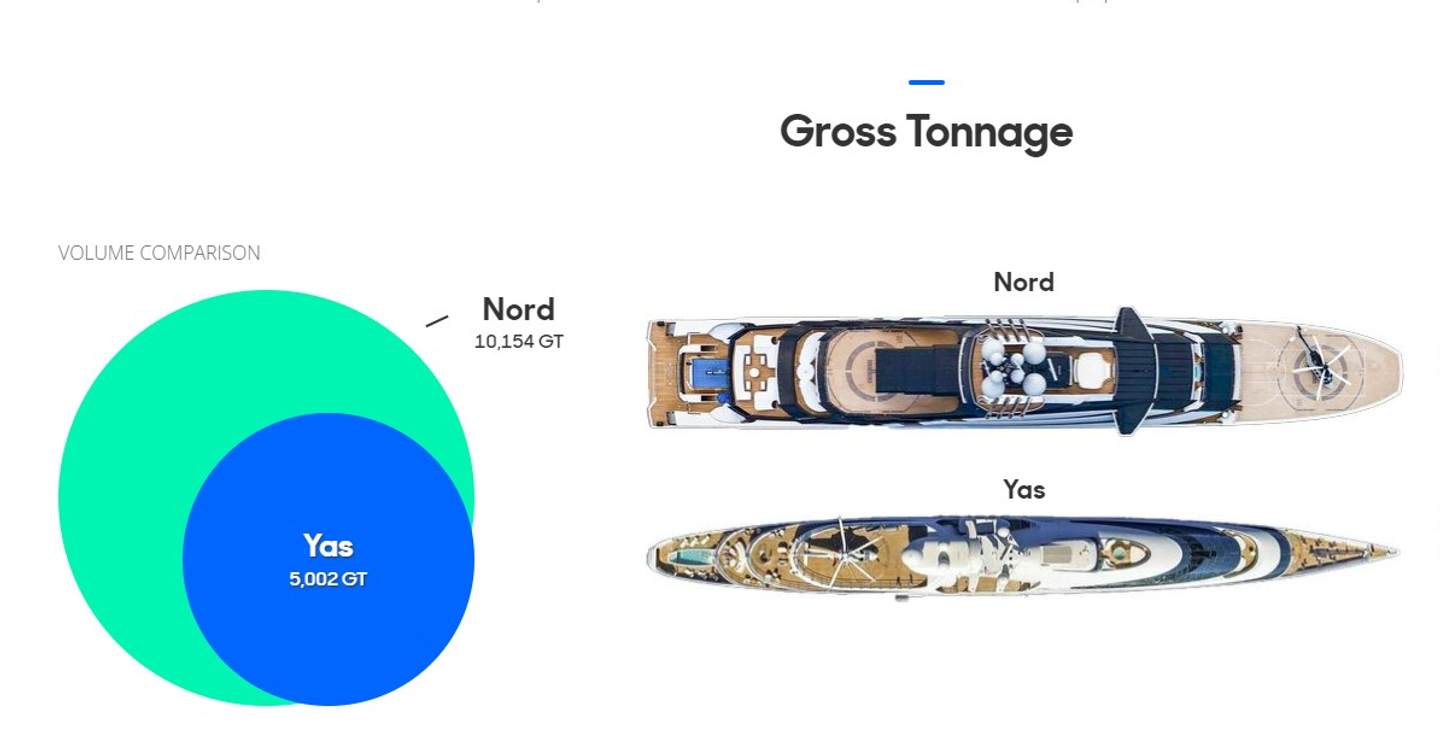
This stark contrast underscores that length alone is not an accurate measure of a yacht's size or volume. NORD, with its multi-deck design, is a true behemoth, carrying 36 guests and 42 crew, with a focus on expansive spaces and luxury. In comparison, YAS accommodates up to 60 guests and 56 crew in what is effectively a much smaller yacht by volume. To check these yachts head-to-head visit the YachtBuyer intelligence pages.


Three years apart, Feadship delivered two impressive custom yachts, LONIAN (2018) and SYMPHONY (2015). Both custom yachts are 3,000 GT, SYMPHONY measures 102m in length overall (LOA) while LONIAN is 87m. Check the YachtBuyer head-to-head to compare these two stunning Feadship full custom yachts.
It's as Much About the Vertical ...
Yachts with similar lengths can have vastly different GTs—it's about the vertical space as much as the horizontal.
Multi-deck yachts have more enclosed spaces spread across several levels, which directly increases the GT. A yacht with more or higher decks will naturally have a larger internal volume, boosting its GT significantly. The term "enclosed" is crucial here because GT is calculated based on the volume of all enclosed spaces within the yacht.
Returning to the NORD and YAS comparison, NORD's high GT of 10,154 is a result of its multiple decks, extensive enclosed interior spaces, and the complexity of its design. This includes large, luxurious living areas, guest suites, and crew quarters spread across several levels. In contrast, YAS, despite having a similar length, has a lower GT because it likely has fewer enclosed decks or less internal volume overall.
A flybridge yacht generally has a higher Gross Tonnage (GT) compared to a sportsbridge yacht of the same length due to its additional upper deck, which increases enclosed internal volume.

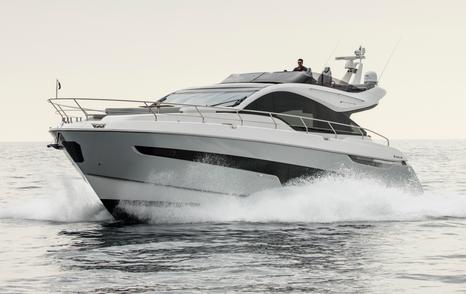
For instance, the Astondoa 66 Flybridge with a GT of approximately 86, benefits from its multi-deck design and spacious flybridge, contributing to a larger internal volume. Conversely, the Fairline Phantom 65 sportsbridge has a GT of around 52. Its more streamlined and open design, featuring a smaller sportsbridge, emphasizes open-air spaces over enclosed volume, resulting in a lower GT.
The 500 GT Rule and its Implications
Gross Tonnage impacts maritime regulations.
A significant regulatory shift occurs at 500 GT, where yachts must comply with international conventions such asSOLAS (Safety of Life at Sea), MARPOL (Marine Pollution), and the ISM Code (International Safety Management).
Given the increased regulatory burden and costs, many yacht owners and builders aim to keep their yachts just under 500 GT. This strategy avoids additional regulations and costs, especially if the extra effort does not significantly increase the yacht's usable space. It's extremely common to see yachts hovering at 499 GT for this reason. Examples include Sanlorenzo's 49.9m ALMAX and Heesen's 50m ALP. Rossinavi's SEAWOLF X, launched in 2024, is another notable project deliberately designed to stay under the 500 GT threshold.
The Importance of GT in Yacht Design and Purchase
For yacht buyers, Gross Tonnage is a critical consideration. When evaluating potential purchases, knowing the GT of a yacht can help set expectations for the onboard experience. A higher GT generally means more space for amenities, larger cabins, and greater overall comfort.
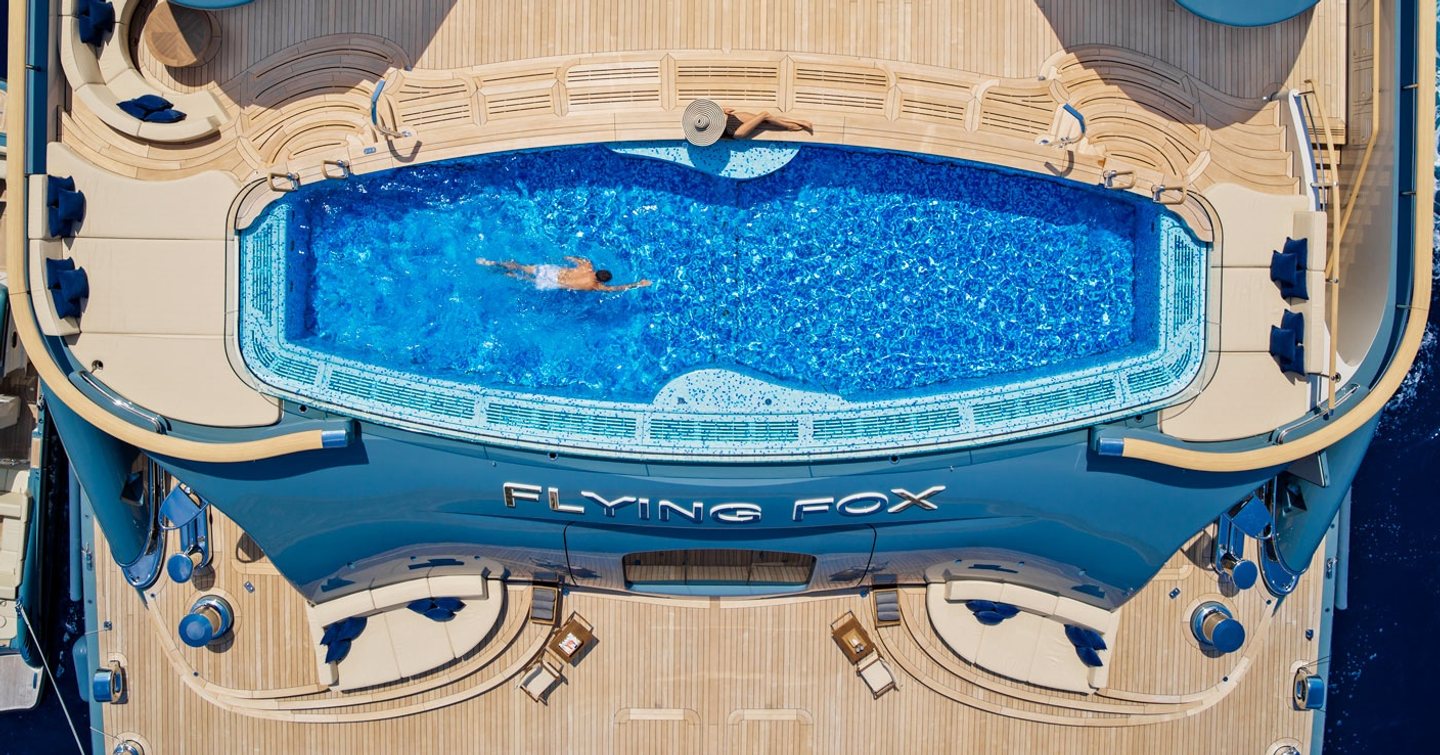
GT is often a better indicator of the yacht's capabilities and the lifestyle it offers. Yachts with higher GTs usually have larger crew accommodations, more storage for water toys and tenders, and more substantial mechanical spaces, which can enhance both luxury and operational efficiency.
How is GT Calculated?
Gross Tonnage (GT) is calculated using a formula established by the International Maritime Organization (IMO).
Volume Measurement:
The yacht’s internal volume is measured in cubic meters, including all enclosed spaces like living areas, storage, and machinery rooms. This volume is taken from the internal hull and superstructure.
Gross Tonnage Formula:
GT = K x V
K is a constant based on the volume of the yacht, and V is the total internal volume in cubic meters.
The constant K varies depending on the yacht’s size and design, as defined by the IMO's tonnage regulations.
Calculation Standards:
The GT calculation follows the guidelines set out in the International Convention on Tonnage Measurement of Ships, 1969 (TONNAGE Convention). These standards ensure consistency in how GT is calculated and reported across different vessels.

By providing a standardized measure of internal volume, GT supports consistent safety and operational practices across the maritime industry.
Design and Build to GT, not LOA
When designing and building a yacht, focusing on Gross Tonnage (GT) rather than just length has several cost implications. GT, which measures the total internal volume, affects material and construction expenses, as larger internal spaces require more materials and more complex construction techniques.
The need to comply with more stringent regulations for larger yachts with higher GT also contributes to higher costs for certifications and safety equipment. Additionally, the design of yachts with higher GT often includes more luxurious interiors and amenities.
Overall, while length provides a basic measure of a yacht’s size, GT offers a more comprehensive view that impacts material, labor, regulatory, and operational costs, reflecting the greater complexity and luxury associated with larger internal volumes.
Summary
In the yachting world, size does matter — but it’s not just about length. Gross Tonnage provides a more accurate measure of a yacht’s true size, reflecting the actual volume and, by extension, the potential for luxury and comfort.
Whether you’re looking at the yacht sales market for a new yacht, admiring them from afar, or curious about the largest yachts in the world, paying attention to Gross Tonnage rather than just length will give you a better understanding of what a yacht really has to offer.
